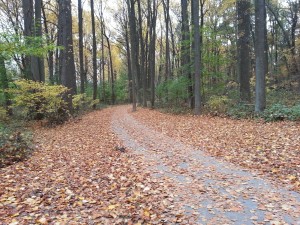Washington DC is full of rich and vibrant history around every corner, so much so that there are millions of topics which can be analyzed and researched to give us a greater understanding of this great city and it’s development. I personally find myself drawn to a few topics in particular, all of which I feel are important to the understanding of the city as a whole and as it developed, and which are important to me personally.
I’ve always found myself interested in the roll of parks and similar parkways within a city environment. These places of tranquility amidst the hustle and bustle of the urban city have always captivated me, and I continually desire to see more of them in some of our most busy areas, where trees are more often cut down than planted. In places like DC, people don’t often look past the grand monuments and historic buildings, completely missing the beauty that can be founds along the river and into the greenery surrounding the area. For this reason, I feel the development of parks and parkways in and around Washington DC might be a great topic to explore. The suburban city developed alongside the natural elements which surround it, and neither would be as substantial or beautiful without the other. Parks offer a sense of solace and interaction between citizens outside of their daily lives, and are essential to the social constructs of DC, as well as other major cities. I would love to explore these places, such as the Sligo Creek Parkway near DC, and analyze the process of conception to development, from how they’re designed and planned to how they’re created and utilized by all different people within the city.
The Smithsonian National Zoo is a major attraction in Washington DC, and one that brings together the social, ecological, and even political nature of our city into one, family-friendly location. The creation of zoos played an essential roll in changing the way early people viewed animals; where they were primarily accustomed to hunting and killing native animals for food and trophy, they were suddenly able to view beautiful and abnormal creatures in their own habitats and learn about them safely. The zoo brought together a desire for cultural and social interaction within the city and the increase in awareness and knowledge about the animal world in a vast multitude of different countries by creating a place where people could socialize while being educated on the importance of different animal species to our planet. the zoo has even been used as a political segue, helping us to form relations with other countries and to show our respect and love for their native animals (for example, China and the Pandas they gifted us, which are now a major attraction). By studying the development and usage of the Smithsonian National Zoo, I can look deeper into the social constructs of the city, as well as into the importance of communal gathering, nature, and education in a suburban environment. I would analyze the zoo’s creative aspects, from design to location planning and habitat construction, and move forward into it’s construction, current uses, and popularity since it’s opening in 1889.
A third topic I would find great interest in researching would be the city planning and architectural design of the city and it’s monuments. It is undoubtedly true that Washington DC offers a multitude of architectural styles and is designed with a fascinating layout, all of which continually captures visitors from around the world, but how did all of these things come to be? Who was entrusted with deciding on a city planner or the different architects for the monuments? How did these designers decide on what was best for the city? All of these questions are essential to understanding how this great city came to be, as well as how it is continually expanding and captivating us everyday.



Either of your first two topics–considerably narrowed down–would be particularly interesting to develop. Did you know that the National Zoo actually originated on the Mall? While visitors to the bison and few other animals held there didn’t exactly see the animals in their natural habitat, they did see animals they’d only read about. It was quite a while after legislation established the National Zoo, though, that the concept of natural habitats became a trend.
Apply the iterative process to whichever topic interests you the most and see what specific questions pop up.